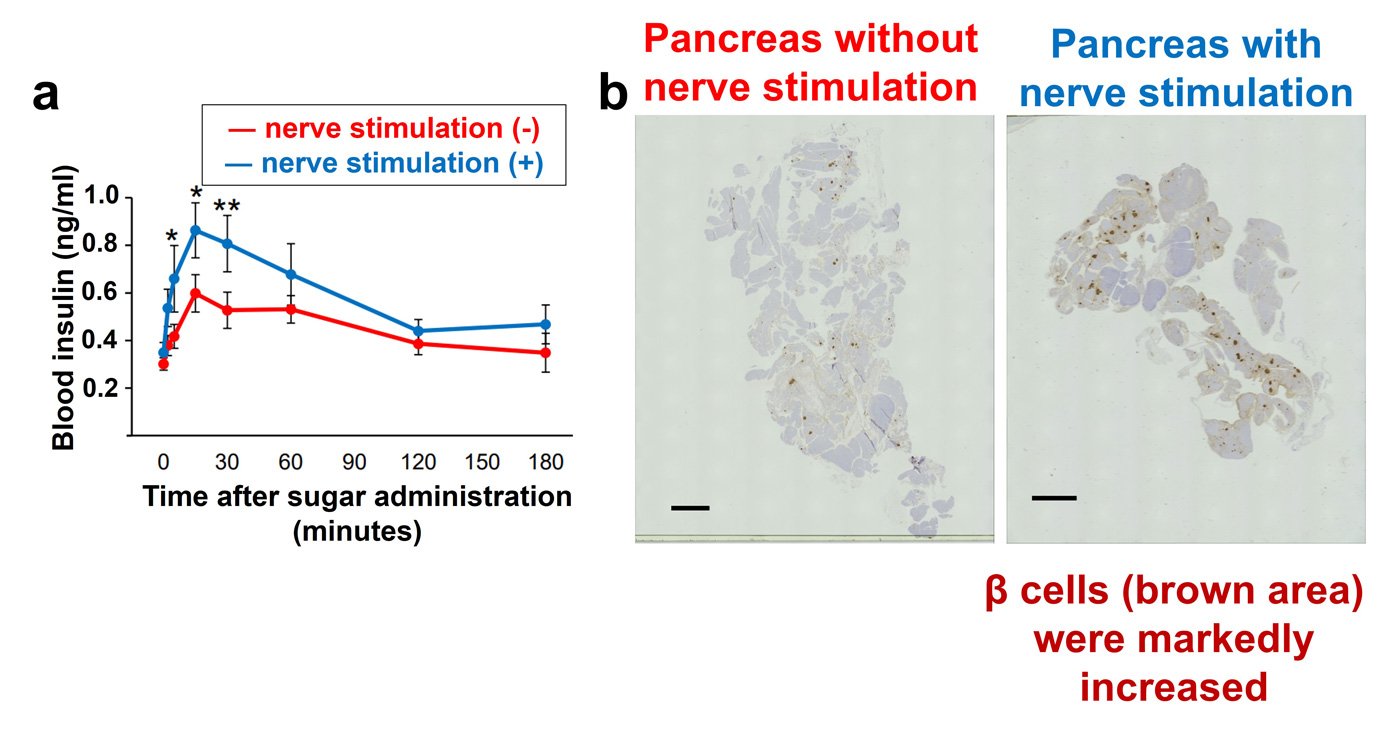Source: Tohoku University Research News
One hormone that lowers blood glucose levels is insulin. Pancreatic beta cells (β-cells) are the only cells that can produce insulin, and a significant cause of diabetes is a reduction in these cells. A way to enhance pancreatic β-cells has not yet been established, despite the eagerness for medications aiming at doing so.
In a potentially beneficial discovery, a study team has discovered that activating autonomic vagal nerves associated with the pancreas might enhance its functionality and augment its quantity in mice.
On November 9, 2023, the team from the Tohoku University Graduate School of Medicine, led by Associate Professor Junta Imai, Assistant Professor Yohei Kawana, and Professor Hideki Katagiri published their research in the international scientific journal Nature Biomedical Engineering.
Using optogenetics, we first developed a means to stimulate individually the vagus nerve leading to the pancreas in mice.
This novel method led to a marked elevation in the amount of insulin in the blood when sugar was administered, indicating improved β-cell function.
Junta Imai
Two weeks of further stimulation of this nerve they have resulted in a more than twofold increase in the initial number of β-cells. The quality and number of β-cells were stimulated by stimulating the pancreatic vagal nerves.
Applying this technique to a mouse model of insulin-deficient diabetes, Imai and colleagues found that the mice’s diabetes was improved by regenerating pancreatic β-cells. By activating the vagal nerves that are related to the pancreas, this is the first instance of diabetes being successfully treated in mice.

We hope our achievements lead to the development of new strategies and preventive methods for diabetes.
We also expect it to advance our understanding of the mechanisms that regulate the function and number of pancreatic β-cells, as well as the causes of diabetes.
Junta Imai
Also Read| Injection-free diabetes care; A new innovation in insulin-producing cells
In conclusion, the team of Tohoku University Graduate School of Medicine discovered the method of stimulation of the pancreatic nerves for the re-development of the cells that produce insulin. This discovery makes a crucial step in the future treatments for the diabetes mellitus.
Journal Reference: Kawana, Y., Imai, J., Morizawa, Y. M., Ikoma, Y., Kohata, M., Komamura, H., Sato, T., Izumi, T., Yamamoto, J., Endo, A., Sugawara, H., Kubo, H., Hosaka, S., Munakata, Y., Asai, Y., Kodama, S., Takahashi, K., Kaneko, K., Sawada, S., . . . Katagiri, H. (2023). Optogenetic stimulation of vagal nerves for enhanced glucose-stimulated insulin secretion and β cell proliferation. Nature Biomedical Engineering, 1-15. https://doi.org/10.1038/s41551-023-01113-2
Report: Achuth B S
Published: